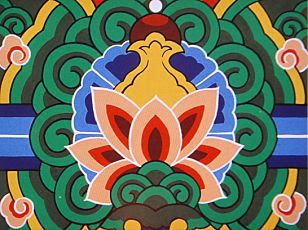 First Turning of the Wheel of Dharma at Deer Park
First Turning of the Wheel of Dharma at Deer Park How should I expound what I have attained after years of efforts? Oh! It would not be easy to explain the Dharma to people who are consumed by the fires of greed and anger. 《Samyuta Nikaya Sutra》
After his triumph under the Bodhi Tree, the Buddha was initially hesitant. He wanted to share his new found wisdom with others but knew that the absolute wisdom of enlightenment would be difficult for sentient beings to understand. Although the Buddha felt immense compassion for all beings and wanted to help those suffering through the cycle of death and rebirth, he knew that enlightenment cannot be expressed in mere words or even comprehended with the intellect.
Sensing the Buddha’s inner conflict, Indra, the supreme ruler of the gods, asked the Buddha on behalf of all sentient beings to teach the Dharma, the Buddhist truth. At last, the Buddha agreed to this colossal task. Arising from his seat, he proclaimed:
“The door leading to the glorious eternal nectar of the Dharma has finally opened. Please, listen to me. And abandon your old beliefs.”
The Buddha first sought out his five former companions. They were residing near the city of Benares in Deer Park after having parted ways with the Buddha earlier. Although they were somewhat reluctant at first to receive the Buddha with whom they had previously parted ways, the five monks were nevertheless soon convinced by the Buddha’s teachings.
In Deer Park, the Buddha “turned the wheel of Dharma” for the first time. This means he shared with his audience the teachings of the Buddhist Dharma or Truth. In this first Dharma talk, the Buddha explained the Four Noble Truths (give link) and the doctrine of no-self (anatman). He taught the Eightfold Path (link) to his attentive listeners.
The Buddha would go on to teach sentient beings for 45 more years. Later his extensive teachings would be recorded as written sutras and compiled into the “Three Baskets” (Tripitaka) or Buddhist cannon (give link?). The Buddha taught people from a multitude of different backgrounds and spiritual levels. He employed an infinite variety of teaching methods referred to as skillful means (upaya). Nevertheless, the Buddha always treated people equally regardless of their social status and upbringing. He taught monks, laypeople, aristocrats, commoners, women, children and even slaves.




















